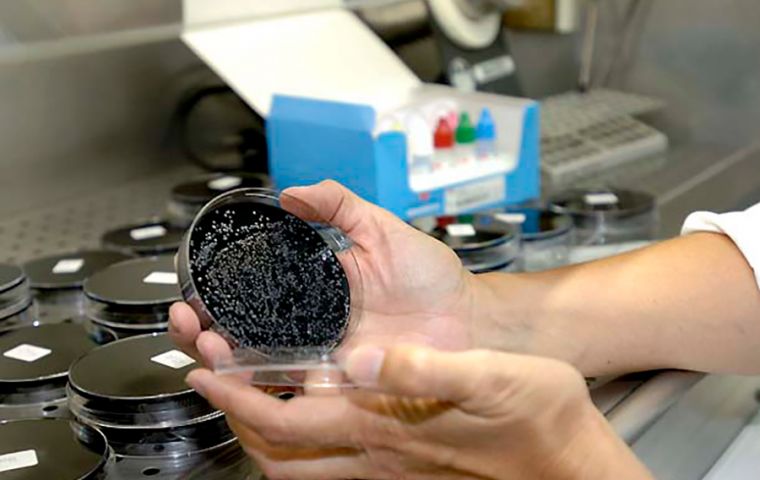MercoPress. South Atlantic News Agency
Respiratory disease in Tucumán determined to be Legionella
 Authorities insisted on people taking precautionary measures similar to those enforced against COVID-19
Authorities insisted on people taking precautionary measures similar to those enforced against COVID-19 Argentina's Health Minister Carla Vizzotti confirmed that the mysterious respiratory disease in the province of Tucumán, which has caused so far 5 deaths, was bilateral pneumonia caused by the Legionella bacteria.
Vizzotti and Tucumán Health Minister Luis Medina Ruiz Saturday announced jointly that the samples had tested positive for Legionella bacteria, possibly of the pneumophila variant, with 11 cases already confirmed.
”In four samples (three respiratory and a biopsy puncture of one of the deceased) is being isolated in the PCR a bacterium that is being typed the surname of the same and will be today. The suspicion is that it is Legionella pneumophila”, said Vizzotti.
The Pan American Health Organization (PAHO) delegate in Argentina Eva Jané Llopis joined the announcement.
Medina Ruiz also explained that when they became aware of two patients with bilateral pneumonia “it caught our attention and we began to work on the active search for patients who meet the same conditions and we found six.”
“On Monday we checked that they were neither Covid-19, nor influenza, nor hantavirus, and on Tuesday we made the decision to make this new epidemic situation known and we generated a contingency plan together with the Nation to evaluate the etiology,” he added.
Bilateral pneumonia is an acute infection of the lung parenchyma that can be detected by a CT scan or chest X-ray. It develops when pathogens (viruses, bacteria, or other microorganisms) generate lung inflammation and infection. In turn, this presence of pus and fluid in the alveoli produces severe respiratory failure. Its most common symptoms are a high fever, difficulty in breathing, cough with phlegm, chills, chest pain, back pain, nausea or vomiting, and diarrhea. The malady can also generate a range of respiratory complications and even affect blood pressure.
It is usually treated with antibiotics as well as with cough syrups, fever reducers, and painkillers. In serious cases, hospitalization is required for mechanical ventilation.
The alert is aggravated in cases of patients with previous respiratory pathologies such as severe asthma or chronic obstructive pulmonary disease (COPD). It can also manifest itself more frequently and at greater risk in smokers, diabetic patients, and people with obesity.
Due to the increase in the number of infections in Tucumán, authorities insisted on “hand washing, vaccination in all age groups and their adequate vaccination schedules, use of masks, social distancing, avoidance of crowds, and isolation” of patients with the disease.
The World Health Organization (WHO) reported it was monitoring the situation in Tucumán.




Top Comments
Disclaimer & comment rulesCommenting for this story is now closed.
If you have a Facebook account, become a fan and comment on our Facebook Page!